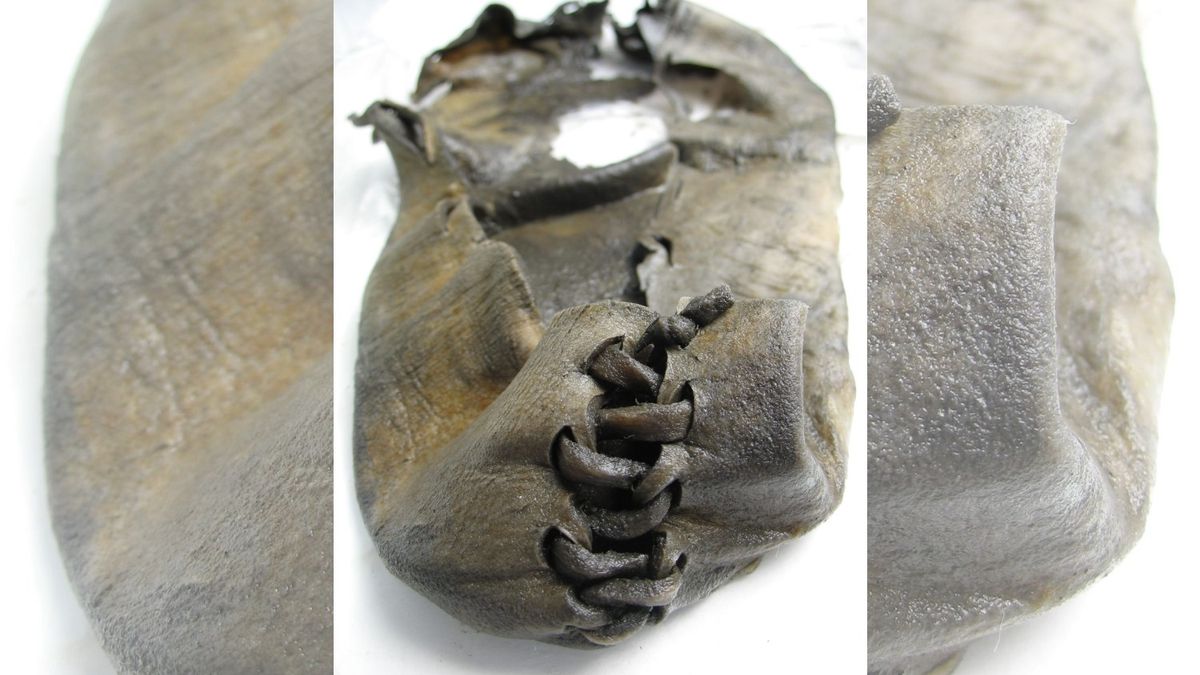Norway’s oldest shoe recovered from melting ice

According to a new report from norwegian university of science and technology (NTNU).
Unlike objects trapped in acidic ground or under gargantuan glaciers, artifacts recovered from Norwegian ice sheets are often found in pristine condition, showing minimal decay and deformation, even after thousands of years of frozen sleep. This is because ice sheets are relatively stable, immobile, and free of corrosive compounds. Perfectly weapons intactclothing, textiles, and plant and animal remains have all emerged from the ice, helping to shed light on thousands of years of Norwegian history.
But now, according to the report’s authors, climate change could put an end to all of this.
In just a few decades, large swathes of Norwegian ice sheets began to melt, exposing undiscovered artifacts to the elements and almost certain deterioration, the authors wrote.
“A survey based on satellite images taken in 2020 shows that more than 40% of the 10 selected ice patches with known finds have melted,” reports co-author Birgitte Skar, archaeologist and associate professor at NTNU University Museum, said in a press release. “These numbers suggest a significant threat to the preservation of ice finds, let alone ice as a climate archive.”
The melted past
Ice patches form at high altitudes, where snow and ice deposits build up and do not melt completely in the summer. Unlike glaciers, ice sheets do not move, so objects deposited in ice sheets can remain stable for hundreds or thousands of years. When the ice begins to melt, these objects come back into the light of day, preserved as they were when the ice engulfed them. However, if scientists are unable to recover these objects soon after the merger begins, they run the risk of losing the artifacts to the elements.
Ice sheet archeology has been a boon to researchers studying ancient cultures, plants and animals in frozen and high regions around the world. In Norway, researchers have discovered thousands of artifacts belonging to Bronze Age hunting tribes who hunted reindeer across northern Europe and southern Scandinavia. According to the new report, reindeer are drawn to the region’s mountainous ice patches during the summer months for relief from insect bites and heat. Where the reindeer went, the hunters followed, leaving behind treasures of artifacts.
The 3,000-year-old shoe, discovered in 2007 in the mountainous region of Jotunheimen in southern Norway, remains a remarkable find. The small leather shoe would be a size 4 or 5 in today’s US sizing, suggesting it either belonged to a woman or a youth. The shoe was discovered next to several arrows and a wooden shovel, suggesting the site was an important hunting ground. Dated to around 1100 BC, the shoe is not only the oldest shoe in Norway, but possibly the oldest piece of clothing discovered in Scandinavia, according to the researchers who discovered it.
Further investigations at the Jotunheimen site revealed even older artifacts, including a 6,100-year-old spire – the oldest object discovered in a patch of Norwegian ice, researchers say. Its presence near the shoe suggests that the site has been continuously used by man for many millennia.
Despite these remarkable discoveries, the report’s authors fear that countless other cultural artifacts are disappearing before they can be recovered, thanks to the effects of climate change. A 2022 report from the Norwegian Directorate of Water Resources and Energy estimates that 140 square miles (364 square kilometers) of ice sheets – an area about half the size of New York – have melted since 2006 If artifacts are not retrieved from these plaques soon after being displayed, they risk being lost, damaged or destroyed forever.
Few ice patches in Norway have been systematically studied, especially in northern Norway, which remains mostly unstudied. To mitigate this, the researchers suggest starting a nationwide ice patch monitoring program, using remote sensors to systematically monitor ice patches and secure any objects that emerge from the melt.
“We used to think of the ice as desolate and lifeless and therefore not very important. That is changing now, but it is urgent,” said report co-author Jørgen Rosvold, biologist and research director deputy at the Norwegian Institute for Nature Research, in the statement: “Large amounts of unique materials are melting and disappearing forever.”
Originally posted on Live Science.